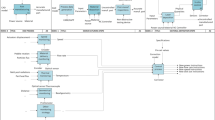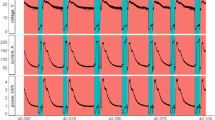Abstract
Additive manufacturing (AM) is a rising technology bringing new opportunities for design and cost of manufacturing, compared to standard processes like casting and machining. Among the AM techniques, Direct Energy Deposition (DED) processes are dedicated to manufacture functional metallic parts. For all DED technologies, the Contact-Tip-to-Work Distance (CTWD)—namely the work distance between the deposition head and the workpiece—is a critical process parameter, strongly affecting deposition conditions and bead geometry. To date, the work distance is mainly considered through geometrical control. However, geometrical control methods are hardly implementable in real-time and may have a limited application range due to their sensor setup. Thus, there is a need to provide for simple CTWD control methods to keep a constant work distance throughout manufacturing. Current researches in the laboratory focus on a multi-sensor monitoring method dedicated to DED processes. In this research, original monitoring strategies using spectral analysis are investigated for arc-based DED processes. This paper aims to be a proof of concept illustrated on the Cold Metal Transfer mode (WAAM-CMT). Based on a study of the acoustic signature of the process, a specific frequency correlated to the CTWD is identified in the WAAM-CMT sound spectrum. This frequency is used to develop a novel CTWD control model, enabling to indirectly assess the work distance with a 0.5-mm precision. The proposed CTWD control method is simple, low-cost, and applicable to a large application range. At the end of the paper, perspectives for integrating the proposed model within layer-wise and real-time monitoring loops are discussed.












Similar content being viewed by others
Data availability
Not applicable.
References
Horvat J, Prezelj J, Polajnar I, Čudina M (2011) Monitoring gas metal arc welding process by using audible sound signal. Stroj Vestn J Mech Eng 57(3):267–278
Muller P (2013) Fabrication additive de pièces multi-matériaux. Thèse de Doctorat, Ecole Centrale de Nantes
Kerninon J, Mognol P, Hascoët JY, Legonidec C (2008) Effect of path strategies on metallic parts manufactured by additive process. In Proceedings of the Solid Freeform Fabrication Symposium (pp. 352-361)
Cunningham CR, Flynn JM, Shokrani A, Dhokia V, Newman ST (2018) Invited review article: Strategies and processes for high quality wire arc additive manufacturing. Addit Manuf 22:672–686
Everton SK, Hirsch M, Stravroulakis P, Leach RK, Clare AT (2016) Review of in-situ process monitoring and in-situ metrology for metal additive manufacturing. Mater Des 95:431–445
Arata Y, Inoue K, Futamata M, Toh T (1981) Investigation on Welding Arc Sound (Report 4): Vibration Analysis of Base Metal during Welding. Trans JWRI 10(1):39–45
Saad E, Wang H, Kovacevic R (2006) Classification of molten pool modes in variable polarity plasma arc welding based on acoustic signature. J Mater Process Technol 174(1-3):127–136
Pal K, Bhattacharya S, Pal SK (2009) Prediction of metal deposition from arc sound and weld temperature signatures in pulsed MIG welding. Int J Adv Manuf Technol 45(11-12):1113–1130
Saini D, Floyd S (1998) An investigation of gas metal arc welding sound signature for on-line quality control. Welding Journal-New York 77:172-s
Martina F, Ding J, Williams S, Caballero A, Pardal G, Quintino L (2019) Tandem metal inert gas process for high productivity wire arc additive manufacturing in stainless steel. Addit Manuf 25:545–555
Sequeira Almeida PM (2012) Process control and development in wire and arc additive manufacturing. Doctoral dissertation, Cranfield University
Chabot A, Laroche N, Carcreff E, Rauch M, Hascoët JY (2019a) Towards defect monitoring for metallic additive manufacturing components using phased array ultrasonic testing. J Intell Manuf pp 1–11
Chabot A, Rauch M, Hascoët J-Y (2019b) Towards a multi-sensor monitoring methodology for AM metallic processes. Journal Welding in the World 63:759–769. https://doi.org/10.1007/s40194-019-00705-4
Hunko W (2018) Cold Metal Transfer-Gas Metal Arc Welding (CMT-GMAW) Wire+ Arc Additive Manufacturing (WAAM) Process Control Implementation. Doctoral dissertation, Auburn University
Han Q, Li Y, Zhang G (2018) Online Control of Deposited Geometry of Multi-layer Multi-bead Structure for Wire and Arc Additive Manufacturing. In: Transactions on Intelligent Welding Manufacturing. Springer, Singapore, pp 85–93
Heralić A, Christiansson AK, Lennartson B (2012) Height control of laser metal-wire deposition based on iterative learning control and 3D scanning. Opt Lasers Eng 50(9):1230–1241
Heralić A, Christiansson AK, Ottosson M, Lennartson B (2010) Increased stability in laser metal wire deposition through feedback from optical measurements. Opt Lasers Eng 48(4):478–485
Xiong J, Zhang G, Qiu Z, Li Y (2013) Vision-sensing and bead width control of a single-bead multi-layer part: material and energy savings in GMAW-based rapid manufacturing. J Clean Prod 41:82–88
Grad L, Grum J, Polajnar I, Slabe JM (2004) Feasibility study of acoustic signals for on-line monitoring in short circuit gas metal arc welding. Int J Mach Tools Manuf 44(5):555–561
Kothuru A, Nooka SP, Liu R (2018) Application of audible sound signals for tool wear monitoring using machine learning techniques in end milling. Int J Adv Manuf Technol 95(9-12):3797–3808
Salgado DR, Alonso FJ (2007) An approach based on current and sound signals for in-process tool wear monitoring. Int J Mach Tools Manuf 47(14):2140–2152
Luo Z, Liu W, Wang Z, Ao S (2016) Monitoring of laser welding using source localization and tracking processing by microphone array. Int J Adv Manuf Technol 86(1-4):21–28
Poulhaon F, Rauch M, Leygue A, Hascoet JY, Chinesta F (2014) Online prediction of machining distortion of aeronautical parts caused by re-equilibration of residual stresses. Key Eng Mater 611:1327–1335 Trans Tech Publications Ltd
Rauch M, Laguionie R, Hascoët JY (2014) A STEP-NC approach for multi-process manufacturing, simulation and optimisation. Int J Prod Dev 19(1-3):21–38
Wang Y, Zhao P (2001) Noncontact acoustic analysis monitoring of plasma arc welding. Int J Press Vessel Pip 78(1):43–47
Feng J, Zhang H, He P (2009) The CMT short-circuiting metal transfer process and its use in thin aluminium sheets welding. Mater Des 30(5):1850–1852
Pickin CG, Young K (2006) Evaluation of cold metal transfer (CMT) process for welding aluminium alloy. Sci Technol Weld Join 11(5):583–585
Cai M, Wu C, Gao X (2018) The influence of arc length correction on welding in cmt welding. IOP Conference Series: Earth and Environmental Science 170(4):042106 IOP Publishing
Ding D, Pan Z, Cuiuri D, Li H (2015) A multi-bead overlapping model for robotic wire and arc additive manufacturing (WAAM). Robot Comput Integr Manuf 31:101–110
Venturini G, Montevecchi F, Scippa A, Campatelli G (2016) Optimization of WAAM deposition patterns for T-crossing features. Procedia CIRP 55:95–100
Montevecchi F, Venturini G, Grossi N, Scippa A, Campatelli G (2018) Idle time selection for wire-arc additive manufacturing: a finite element-based technique. Additive Manufacturing 21:479–486
Hascoët J-Y (1989) Etude de la zone fondue et de l'usure des électrodes en relation avec les données technologiques du soudage TIG en vue d'applications en robotique. Thèse de Doctorat, Ecole Centrale de Nantes
Cicone A, Liu J, Zhou H (2016) Adaptive local iterative filtering for signal decomposition and instantaneous frequency analysis. Appl Comput Harmon Anal 41(2):384–411
De Cheveigné A, Kawahara H (2002) YIN, a fundamental frequency estimator for speech and music. The Journal of the Acoustical Society of America 111(4):1917–1930
Rabiner L (1977) On the use of autocorrelation analysis for pitch detection. IEEE Trans Acoust Speech Signal Process 25(1):24–33
Stanković L, Djurović I, Stanković S, Simeunović M, Djukanović S, Daković M (2014) Instantaneous frequency in time–frequency analysis: Enhanced concepts and performance of estimation algorithms. Digital Signal Processing 35:1–13
Tang L, Landers RG (2011) Layer-to-layer height control for laser metal deposition process. J Manuf Sci Eng 133(2):021009
Code availability
Not applicable.
Funding
This research was funded by the Joint Laboratory of Marine Technology (JLMT), involving Centrale Nantes and Naval Group.
Author information
Authors and Affiliations
Contributions
J-Y.H and M.R directed the project and devised the main conceptual ideas. A.C performed the experiments, analyzed the data and wrote the manuscript in consultation with all the authors.
Corresponding author
Ethics declarations
Competing interests
The authors declare no competing interests.
Additional information
Publisher’s note
Springer Nature remains neutral with regard to jurisdictional claims in published maps and institutional affiliations.
Rights and permissions
About this article
Cite this article
Chabot, A., Rauch, M. & Hascoët, JY. Novel control model of Contact-Tip-to-Work Distance (CTWD) for sound monitoring of arc-based DED processes based on spectral analysis. Int J Adv Manuf Technol 116, 3463–3472 (2021). https://doi.org/10.1007/s00170-021-07621-2
Received:
Accepted:
Published:
Issue Date:
DOI: https://doi.org/10.1007/s00170-021-07621-2




